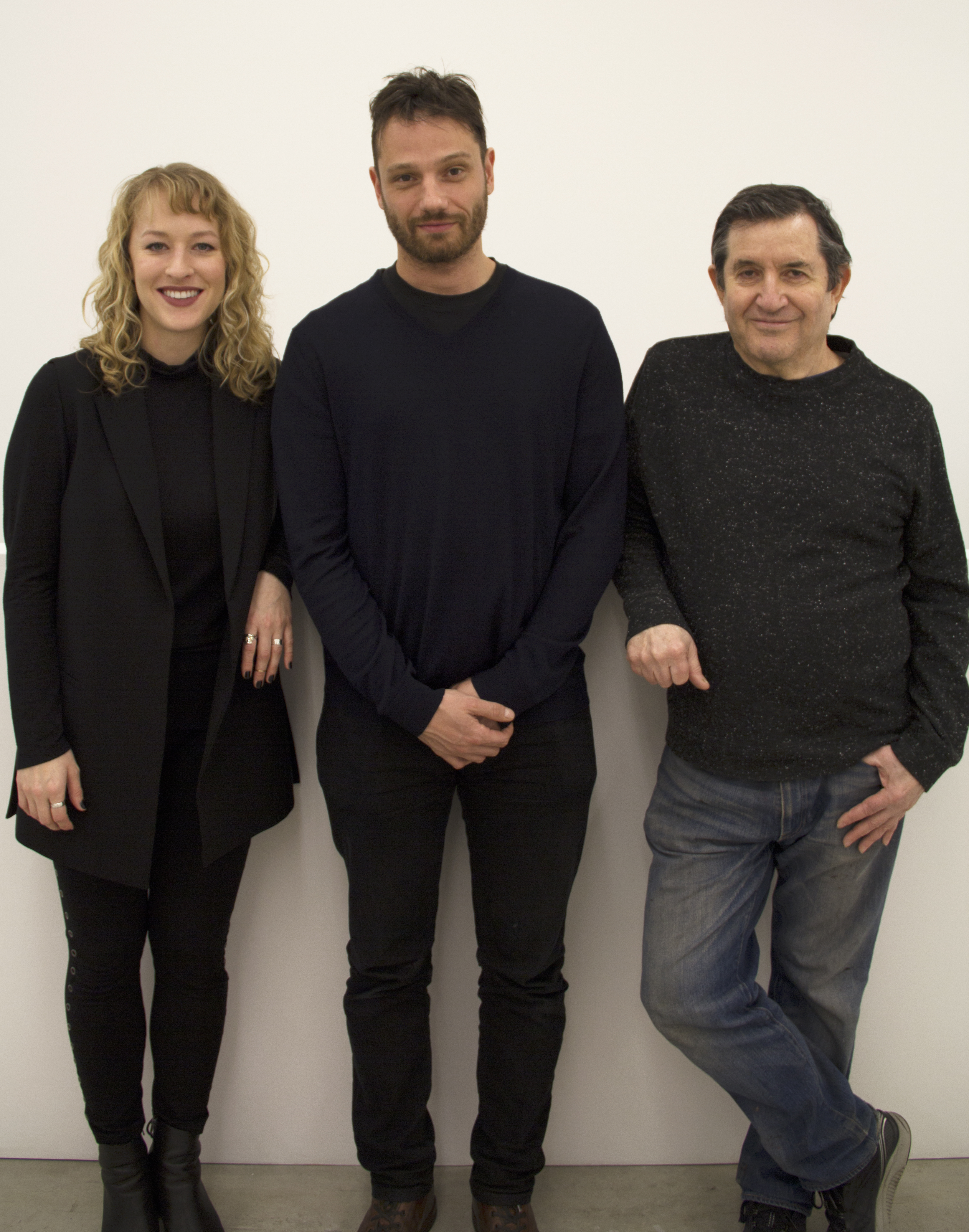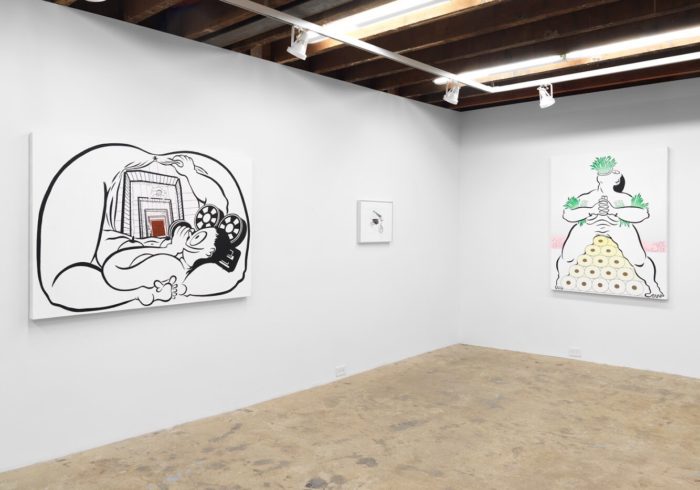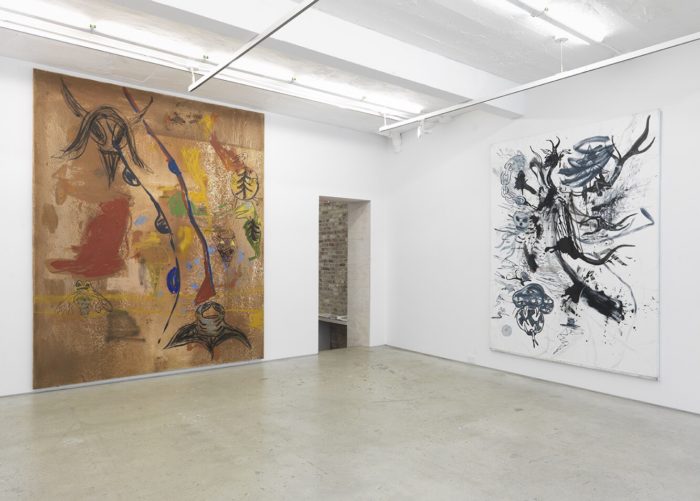
Olivia Smith, Chris Dorland and David Deutsch of Magneta Plains.
“I like to joke that I was his favorite studio assistant,” says Chris Dorland. “But David has never confirmed it.” Dorland speaks of former boss and current co-director, veteran painter David Deutsch. The two working artists, who together with their collaborator Olivia Smith, form the intergenerational trio that run the Lower East Side gallery, Magenta Plains.
Celebrating its second anniversary this March, the Allen Street gallery has reached a point of transition, taking its programming from a project-based space, to releasing its roster of represented artists publicly for the first time this month.
Magenta Plains may have been the brainchild of Deutsch, a Los Angeles born painter, but Deutsch always intended the gallery to be a collaborative effort. In late 2015, Deutsch reached out to Dorland, a Montreal born New York based artist who worked as the painter’s studio assistant as an undergraduate. Dorland enthusiastically agreed to team up his longtime friend, but the pair knew that with their robust studio practices, they needed a third partner. Enter Smith, the Dallas-born former Exhibition A director, to round out command. Together, the newly minted trio opened its doors in early 2016 with a William Wegman show. Wegman and Deutsch dear friends since their early twenties.

Install of Ebecho Muslimova’s self titled solo show earlier in 2018. Image courtesy of the gallery.
The narrative Magenta Plains chases is a unique product of the gallery’s scope of leadership. “Three is a interesting number,” Olivia observes of their triangulated union, made more compelling by the age gap. Deutsch in particular brings a unique perspective to the space, with his long vision to what an artist career looks like, and what a gallery can actually be to an artist. “David knows what a fifty to sixty year career looks like,” Dorland emphasizes. “And we have taken a long arc in mind while forming the gallery.”
Of the curiously titled space, cheekily devoid of authorship, Smith says, “we knew wanted a creative name.” She continues: “Something with more breathing room, that allowed others to draw their own associations.” A game of exquisite corpse placed “magenta” and “plains” together and it stuck. Smith describes the malleability of a word like magenta, a color that conjures painting, as much as CYMK color model of the digitalscape.

Install of Bill Saylor’s show, ‘Shallow Ballers’ at Magenta Plains in 2017. Image courtesy of the gallery.
It’s a flexibility further expressed in the gallery’s programming, where the colorful, gestural works of culty painter Bill Saylor, pivotal to 1990’s Brooklyn scene, is represented alongside the young satirical artist Ebecho Muslimova, who recently wrapped up her lauded first solo show with the gallery earlier this year, taking her cartoonish alter ego “Fatebe” from ink to paint for the first time. Both artists are included in the pithy list of artists the gallery now represents, diverse in age and practice, which also includes Alex Kwartler, Anne Libby, Don Dudley, Peter Nagy, Nathaniel Robinson, Tiril Hasselknippe and Zach Bruder.
The gallery’s interest in emergent art as much as emerging artists, gives way to play and rediscovery. For example, for Magenta’s first foray into the art fair circuit with the Independent, the gallery will feature 1980’s works by Peter Nagy. Along with fellow artist Alan Belcher, Nagy created Nature Morte, part of a constellation of artist-run spaces in East Village during the eighties, that served as the breeding ground for artists like Richard Prince, Peter Halley and Jeff Koons. Nagy’s gallery also launched the career of punk painter Steven Parrino, who also will be featured in Magenta’s Independent showing alongside contemporary sculptor, Anne Libby and painter Don Dudley.
“The artists we show at Magenta Plains like the range and context we are providing for their work to exist within a broader conversation,” Olivia says. This is a relationship that goes both ways. When I caught up with Deutsch from his studio, he said the gallery, and its dialogue with younger artists has opened up his practice too. “It gets me out of my studio, which is something I needed” he joking adds, “left to my own devices, I’d be here seven days a week.”










 in your life?
in your life?

